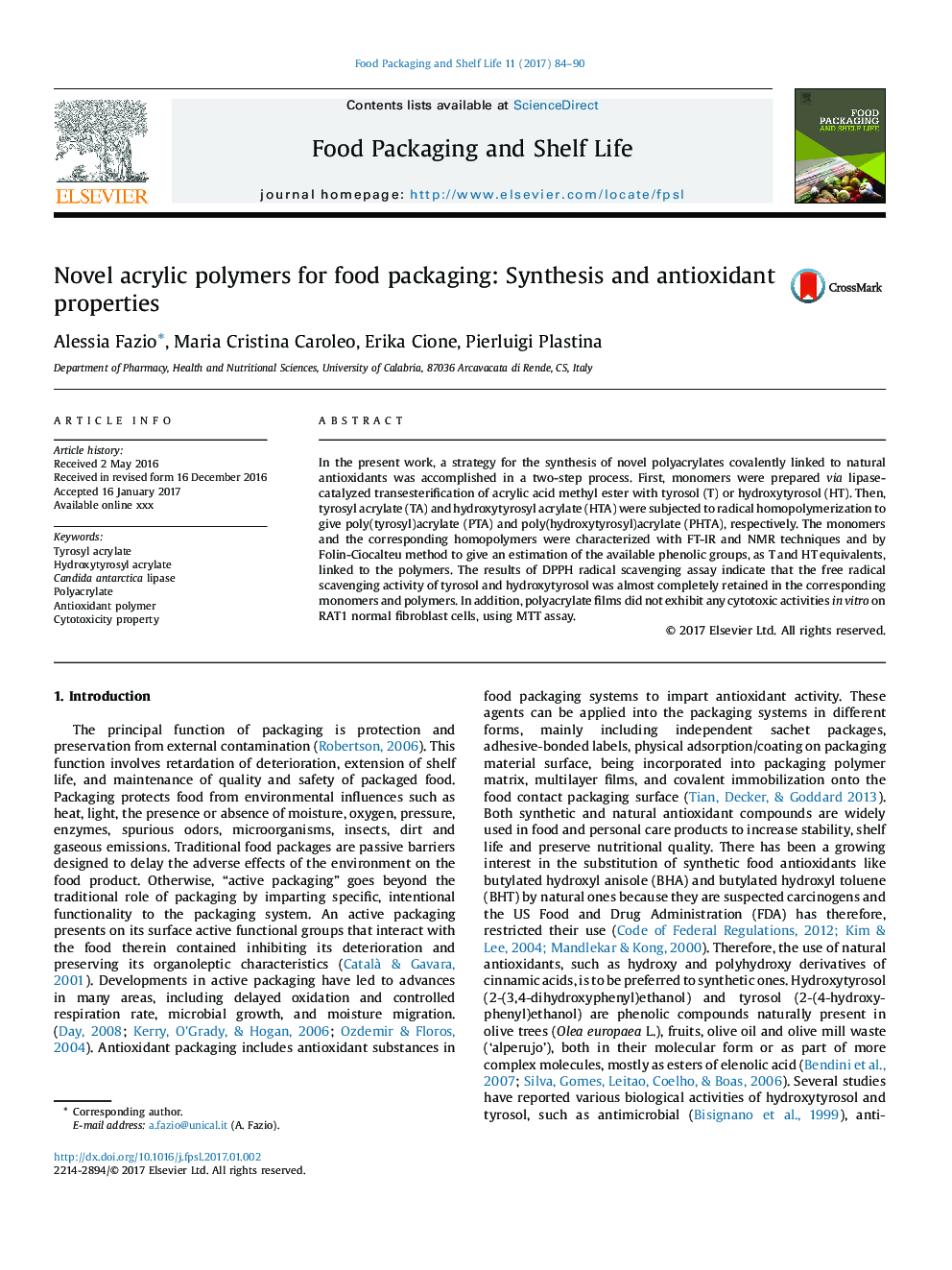| Article ID | Journal | Published Year | Pages | File Type |
|---|---|---|---|---|
| 4753156 | Food Packaging and Shelf Life | 2017 | 7 Pages |
Abstract
In the present work, a strategy for the synthesis of novel polyacrylates covalently linked to natural antioxidants was accomplished in a two-step process. First, monomers were prepared via lipase-catalyzed transesterification of acrylic acid methyl ester with tyrosol (T) or hydroxytyrosol (HT). Then, tyrosyl acrylate (TA) and hydroxytyrosyl acrylate (HTA) were subjected to radical homopolymerization to give poly(tyrosyl)acrylate (PTA) and poly(hydroxytyrosyl)acrylate (PHTA), respectively. The monomers and the corresponding homopolymers were characterized with FT-IR and NMR techniques and by Folin-Ciocalteu method to give an estimation of the available phenolic groups, as T and HT equivalents, linked to the polymers. The results of DPPH radical scavenging assay indicate that the free radical scavenging activity of tyrosol and hydroxytyrosol was almost completely retained in the corresponding monomers and polymers. In addition, polyacrylate films did not exhibit any cytotoxic activities in vitro on RAT1 normal fibroblast cells, using MTT assay.
Related Topics
Physical Sciences and Engineering
Chemical Engineering
Bioengineering
Authors
Alessia Fazio, Maria Cristina Caroleo, Erika Cione, Pierluigi Plastina,
